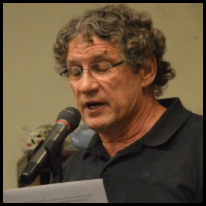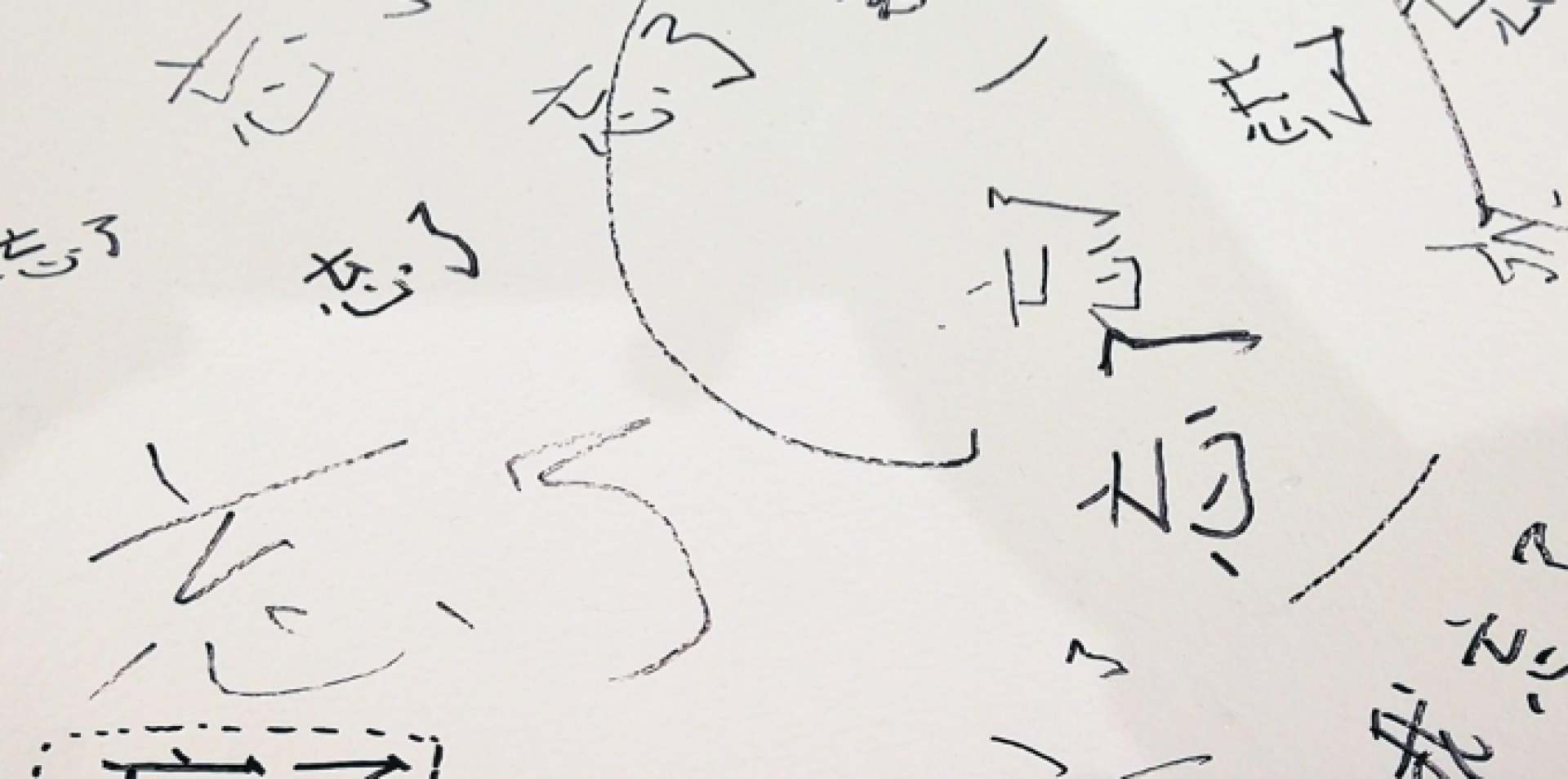Wawa, Anna and Anna, Finishing Line Press, 2018. 26 pgs.

The Hong Kong poet Wawa (who has also published as Lo Mei Wa) explores text and image, text as image and image/text as experience in her latest book of poems, Anna and Anna. The short volume is made up, in large part, of dual texts. Filling the top of the page, printed in Courier font, are descriptions of various landscapes; the lower half of the page is taken up with lines in Times New Roman. The lower text is more conventional in its grammatical construction, spacing and language and more personal, focusing on a human individual rather than a scene of nature.
The theme—but also the charm, the appeal and the enigma of the book—is found in the relation of the two different and differently presented series of texts. Each segment, at least as I understand it, forms a single poem. Titles are given in the upper text (in Courier font) and consist of the word “drawing” and a number: “drawing #6,” “drawing #8”; the poems in the first half of the book are numbered sequentially; some of these also have identifying letter/number codes; in the second half the titles jump to the hundreds and their nomenclature is slightly out of sequence.
All of this rather minute detail is necessary because the language, the placement, even the printing of the various pages, with their contrasting styles and contrasting fonts, is key to understanding the basic theme of Wawa’s latest book.
Any interpretation that claims to be the final word on a work of poetry violates the nature of poetic art. But understanding the nature of the poetic dualism in the pages of this text is important in understanding the work’s thematic trajectory; I would even say, essential.
The back cover of the books suggests that the upper-half poems are “drawings on the window that separates the observing from what it clarifies” and the lower-half shows “the interior of the room’s soul occupant.” This is certainly true to some degree; but the top portions of the page, with their Courier font and numbered titles (e.g., “#ED9CAF desert sand sky,” “#AEC6CF pastel blue”) suggest also digital entries. Courier font was often used for labelling in the early days of computers. The upper text is descriptive in an often beautiful but always sketchy, flat descriptive manner, as in
wakeful fog
white
falling as rain
But the lines above are mere description and identification of content, and the content is numbered, as if for placement in a file. The example just cited is “drawing #109.” This is followed by lines in a different font in the second half the page:
A dream falls
And hits the forest
The trees burn
Many hers are injured
running for their lives
she looms from
the depths of a fog
walking to the accident
Placement of the two sections of verse (and all the others in the book) suggest that they are halves of a whole. There is a relationship between them. What is the relationship? What is going on in the poetic text?
I would like to suggest they are images—perhaps digital images—of things and are related to the texts beneath in some way. Reactions to the image? The response of a soul to an image of reality? The humanisation of cyber-stored pictures or drawings? This would be in keeping with the era in which we live. The hash tags and letter/number coding in the upper texts suggests as much, as does the more emotional and personalised language of the texts in the lower half of the page.
This is also suggested (at least to me) by the dualisms found elsewhere in the book: the title, Anna and Anna; the name, Wawa (as opposed to Lo Mei Wa); the two sections of the book, subtitled “Anna (M87)” and “Anna (NGC5457)”—though I should add that there is section of one page titled “And,” which consists of a personal letter, displayed in Courier, from Anna to Anna; these three sections repeat the title of the work.
The text in this one-page section is enigmatic, but the first paragraph is significant to how I interpret the book: “Dear Anna, When I open my eyes and live, there is one world; when I close my eyes and sleep, there is another world. I am alive in both, all the time every day.” This suggests numerous dichotomies: sleep and wake, thought and deed, mind and body. But the world of artificial stored images and the world of one’s emotional responses to these might be suggested here as well.
Anna and Anna is a marvellously written poetic journey. It is a book to re-read and contemplate; one that creates beautiful images and fascinating parings. Text comments upon text and the interplay of these suggests relationships between differently presented images—relationships that are beautiful; that are mysterious as the juxtapositions of things found in Zen poetry (the back cover of the book compares these to “Zen poems of wandering monks,” which were replete with paradox). And as with those paradoxes, experience of the text is just as important as understanding.
![]()

David W. Landrum teaches Literature at Grand Valley State University in Michigan, USA. His poetry, fiction, and literary criticism have appeared in numerous journals and magazines, including Twentieth-Century Literature, Mosaic, Studies in Philology, and Italian Quarterly.
